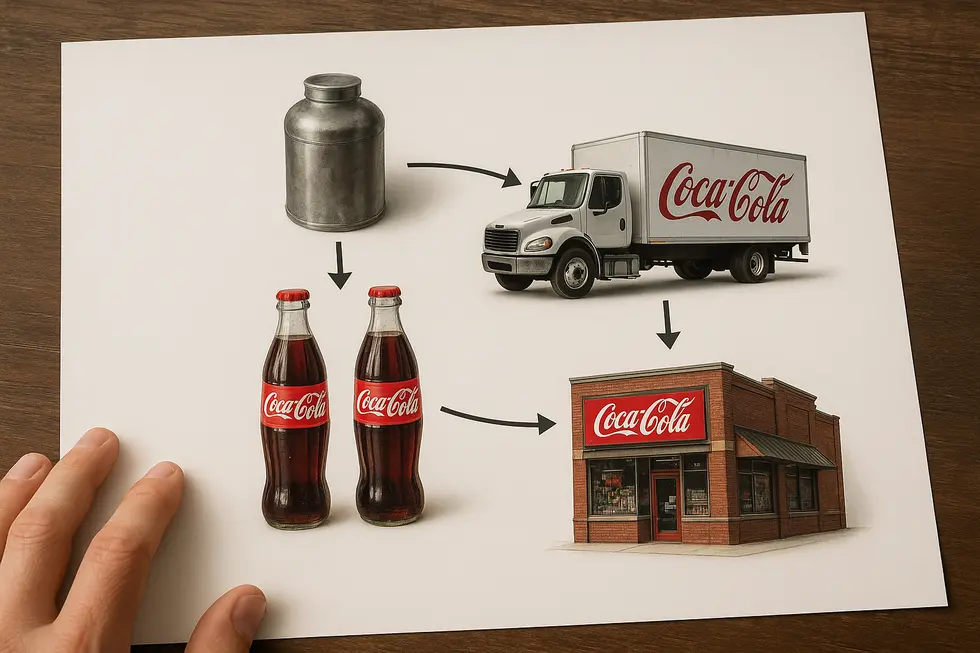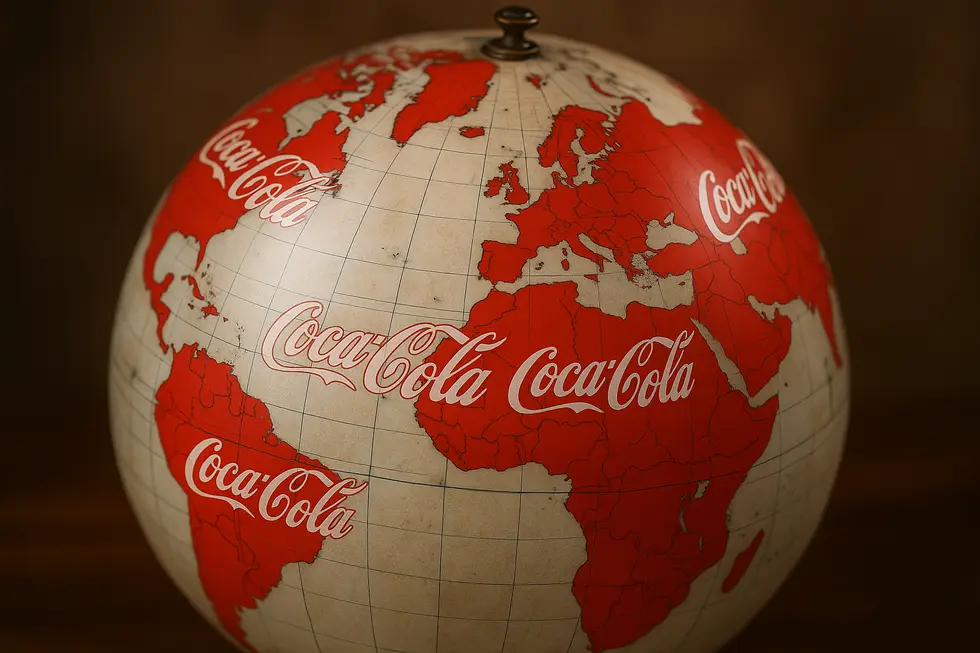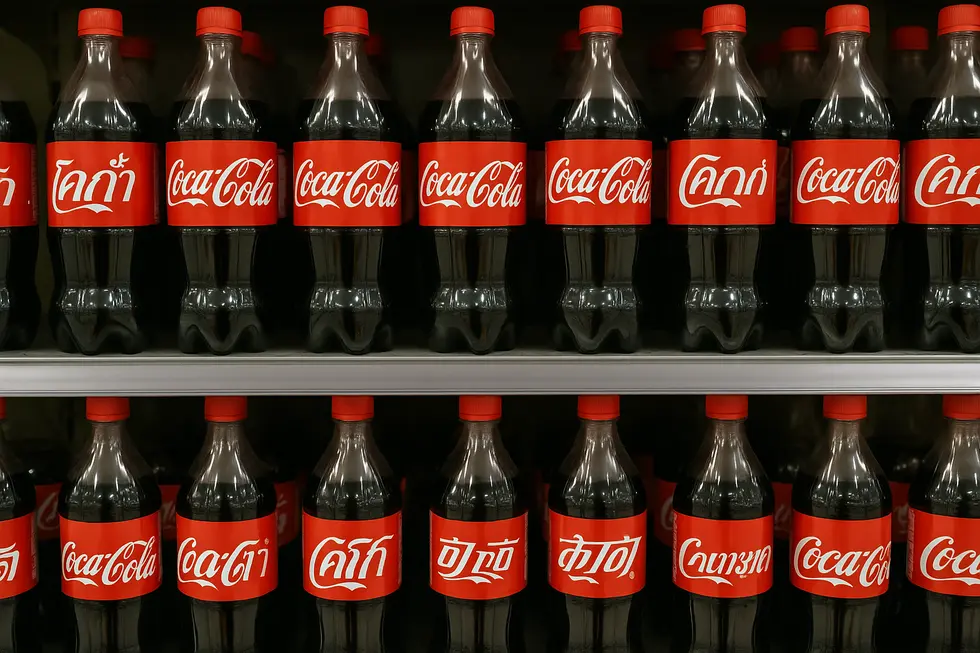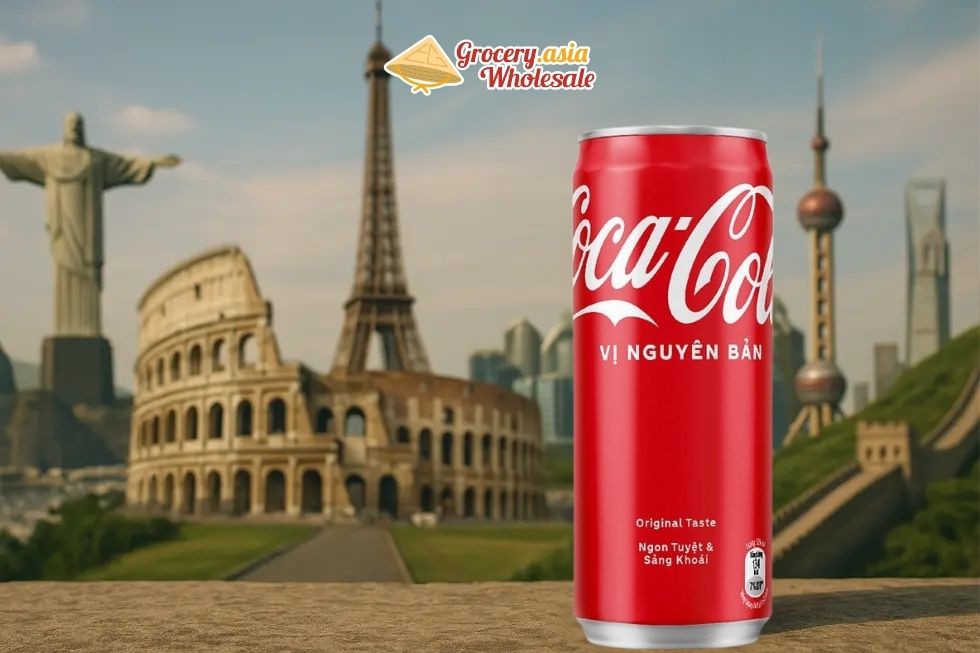No products in the cart.
Coca-Cola Carbonated Soft Drinks, Soft Drinks
The Global Journey of Coca-Cola: From Atlanta to the Ends of the Earth
The Coca-Cola Company’s evolution from a local Atlanta beverage to a global icon is a testament to innovative marketing strategies, franchising initiatives, and cultural adaptability. This article examines Coca-Cola’s international journey, beginning with its cautious foray into foreign markets in the early 20th century to its post-War expansion, which cemented its status as a symbol of American influence worldwide. We’ll delve into the crucial role franchising played in its strategy, how it achieved presence in over 100 countries by the mid-20th century, and the modern challenges and adaptations it faces today. Each chapter provides insights into how Coca-Cola not only navigated but also helped shape the global market landscape.
Table of Contents
Forging an Icon: Coca-Cola’s International Footprint from 1900 to 1940s

Coca-Cola’s journey from a humble American beverage to a global staple began earnestly in the early 20th century. By 1900, the company had already made strides into Britain, marking the start of its international expansion. Gradually, its influence spread across North and Central America, the Caribbean, Western Europe, and parts of Asia. This growth was not just about geographical reach; it was also about refining the brand into a symbol of American innovation and quality.
During these formative decades, Coca-Cola worked diligently on standardizing its branding, ensuring the iconic Spencerian script and vivid red color became synonymous with quality and refreshment worldwide. By focusing on consistency and visibility, the brand effectively imprinted itself into the global consciousness. The geopolitical landscape of the time also played a role in Coca-Cola’s expansion. Post-World War I economic conditions and the subsequent rise of American cultural influence provided fertile ground for the company to establish itself abroad.
Though geopolitical challenges sometimes hindered its progress, Coca-Cola’s strategic approach — rooted in robust marketing and a pioneering franchise model — helped overcome these hurdles. Its ability to adapt to local markets while maintaining a consistent global identity set the stage for its further growth post-World War II. For a more detailed look into Coca-Cola’s branding journey, visit Design Rush on Coca-Cola Logo.
Coca-Cola’s Post-War Expansion: A Soft Power Phenomenon

The post-World War II era marked a transformative period for The Coca-Cola Company, as it emerged as a symbol of American soft power. This growth was fueled by the widespread distribution of its products to U.S. soldiers during the war, establishing Coca-Cola as a fixture of Americana. Its availability to troops abroad offered a taste of home and freedom, helping it become ingrained in local markets once peace returned.
Coca-Cola strategically diversified its products and packaging, responding to a burgeoning global appetite. The company capitalized on the economic upturn of the post-war years, intensifying its market penetration worldwide. The brand’s entry into diverse markets was bolstered by its established reputation as a comforting emblem of capitalist success, gradually embedding itself into local cultures and traditions.
The brand further cemented its cultural symbolism through iconic marketing campaigns, including its associations with Christmas images, notably via the Santa Claus image popularized in its seasonal advertisements. Coca-Cola’s sponsorships of global events like the Olympics and FIFA World Cup also played crucial roles in sustaining its international image, portraying itself as a global ambassador of American values such as freedom, prosperity, and modernity. These strategic moves ensured Coca-Cola’s place as a central player in the narrative of globalization and American cultural dissemination.
For further insights into Coca-Cola’s role in global soft power, refer to the Encyclopedia Britannica on Coca-Cola’s Postwar Growth.
Franchising: The Backbone of Coca-Cola’s Global Expansion

Coca-Cola’s meteoric rise to become a global powerhouse can largely be attributed to its groundbreaking franchising model. By producing only syrup concentrate and outsourcing bottling and distribution, Coca-Cola tapped into local expertise, enabling rapid international expansion. This strategy, conceived by Asa Candler in the late 19th century, empowered independent bottlers to handle manufacturing, while the company retained control over the brand and product quality.
Operating in over 100 countries by the mid-20th century, Coca-Cola’s franchising approach allowed it to leverage local market know-how and infrastructure without the need for direct investment in every market. Franchisees, in return for brand usage rights and operational support, mix the concentrate with water and sweeteners, package, carbonate, and distribute the beverage within their regions.
This decentralization mirrors international strategies adopted by other global giants like Domino’s Pizza, where localized operations maintain brand consistency through standardized systems. A noteworthy example of Coca-Cola’s success is its partnership with Coca-Cola FEMSA in Latin America, which illustrates the efficiency of franchising in penetrating underdeveloped markets using established retail networks.
With nearly half the global volume managed by autonomous bottlers, Coca-Cola’s franchising model is a testament to its adaptability and strategic foresight, ensuring its products resonate with an ever-diverse and expanding customer base. For further reading, visit Coca-Cola.
Global Surge: Coca-Cola’s Mid-20th Century Conquest

By the mid-20th century, Coca-Cola had transformed into a globally recognized brand, marking its presence in over 100 countries. This era of rapid expansion was rooted in earlier ventures, with the company’s first international forays beginning in 1900 in Britain and Cuba after 1898. Such pioneering moves set the stage for what would become an extensive global network.
During the first half of the 20th century, Coca-Cola’s reach was largely confined to the Americas, Western Europe, and parts of Asia. However, post-World War II dynamics fueled a more aggressive global expansion. This period solidified Coca-Cola as a quintessential symbol of American culture and its economic clout, embodying soft power through ubiquitous red and white branding.
An innovative franchising model was central to this success, allowing Coca-Cola to sell its syrup to local bottlers around the world. This approach not only facilitated international growth but also ensured that the brand maintained consistency and quality across diverse markets. Despite challenges, such as the Cuban embargo starting in 1960, Coca-Cola’s momentum continued, illustrating a resilience and adaptability that was key to its expansion. For further details on Coca-Cola’s international growth, please visit Coca-Cola’s Wikipedia page.
Coca-Cola’s Modern Challenges: Navigating Global Changes

In the dynamic landscape of global commerce, even iconic brands like Coca-Cola are not immune to modern-day challenges. Key markets such as India, Thailand, and Mexico are witnessing declining volumes due to economic constraints, shifting consumer preferences, and geopolitical tensions. In the second quarter of 2025, Coca-Cola reported a marginal 1% decline in global unit case volume. This was, however, balanced by a remarkable 6% increase in price and product mix, achieved through strategic pricing initiatives and a nuanced selection of product offerings across various channels.
Coca-Cola is quick to adapt by embracing premiumization and innovating its product lines. In the Asia Pacific region, for instance, Coca-Cola Zero Sugar has seen a significant rise in demand, reflecting a global 14% increase in volume. Expanding its portfolio, Coca-Cola is delving into categories like water, sports drinks, coffee, and tea, addressing a decline in traditional soda consumption.
Localized marketing campaigns are also pivotal, with initiatives like ‘Thumbs Up with Biryani’ in India and novel strategies in Mexico responding to unique local conditions. Further, the adoption of digital transformation tools has streamlined operations, engaging over a million customers through digital ordering platforms. Coca-Cola’s agile approach embodies an all-weather strategy, fine-tuning execution for specific market demands and expanding sustainability efforts through refillable packaging. These proactive adaptations showcase Coca-Cola’s resilience and commitment to evolving with global market demands. For more details on similar strategies, visit Coca-Cola’s Q2 results.
Final thoughts
Coca-Cola’s journey from its cautious beginnings to becoming a global mainstay reflects its adaptive business strategies and its symbolic representation of American culture and globalization. By leveraging franchising and strategic marketing, the company established a robust network enabling expansive global reach. Despite facing modern challenges, Coca-Cola continues to adapt, ensuring its legacy as one of the world’s most recognized brands. These insights offer valuable lessons in strategic growth and adaptability in an ever-evolving international market.
👉 Looking for a trusted Coca-Cola wholesale supplier? Contact Asia Grocery Co., Ltd for bulk deals and export-ready inventory.
About us
Asia Grocery Co., Ltd is a trusted distributor, wholesaler, and exporter of fast-moving consumer goods (FMCG) from Vietnam, backed by over 20 years of expertise. We deliver authentic products from globally recognized brands such as P&G, Unilever, Redbull, Coca-Cola, Pepsi, Asiadeli, along with traditional and culturally significant Asian products, catering to customers worldwide with a special focus on Vietnamese and Asian communities abroad.


